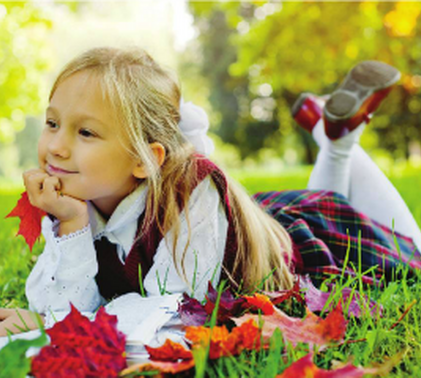
By Debra Farhi – Private Schools Magazine (Summer 2014)
The teaching profession has been plagued with increased burnout as a result of contributing stress factors, such as excessive workloads and the drive to meet unrealistic targets. Mental health issues such as anxiety, fear, depression and eating disorders are escalating among children and adolescents. Studies have demonstrated that teacher well-being affects the overall classroom climate and student well-being. Mental Health Statistics report more than half of adults with mental health problems were diagnosed in children, with less than 50 per cent treated appropriately at the time. We can see that it is important to tackle both teacher and student wellbeing. So why mindfulness? Mindfulness has been shown to increase the grey matter density in the hippocampus, which is important for learning, memory, self-awareness and compassion, and decrease the effects of the amygdale, which plays a key role in anxiety and fear. It has been linked to positive emotional states such as happiness, well-being and serenity. Jon Kabat-Zinn, professor emeritus of medicine at the University of Massachusetts, states mindfulness as the “focused attention on present moment experience without judgement or resistance.” When we are more aware, we are less likely to miss the great stuff around us and less prone to succumb to our default programming or ‘negativity bias.’ As Eckhart Tolle states, “we cannot be both unhappy and fully present in the now.” However, Kabat-Zinn is adamant one needs to have ethical values and behaviour in place in order to attain harmony; he states; “you cannot possibly hope to know stillness…if your actions are agitating and destabilising, the very instrument through which you love, namely, your own mind.” In other words, mindfulness is not present if teachers gossip in the staffroom or shout at pupils, for example. Equally, it vanishes if heads are dishonest by employing discriminatory practices. By being fully present, he states teachers and pupils can override their impulse to want things their way, and instead offer each other kindness and compassion.
Chris Cullen and Richard Burnett, founders of the Mindfulness in Schools Project (MISP), wrote the ‘.b’ course (it stands for ‘Stop, Breathe and Be!’) with the help of Dr Chris O’Neill in 2007. It is an eight week course which is usually embedded through a school’s PSHE or Well-Being Programme and introduced at Year 10. It allows individuals to gain greater self-awareness, acceptance and self-compassion by ‘living in the now.’ I participated in a lesson on how we relate to our thoughts given by Oenone Crossley-Holland, head of mindfulness at South Hampstead High School. She demonstrated that thoughts are analogous to buses; we can observe them as they come and go, yet we have a choice whether we board a particular bus and we can step off at any time. After doing a short meditation, girls remarked that there was greater distance between their thoughts. For home practice, the girls were asked to look at what ‘thought buses’ had taken them for a ride and what the ‘traffic’ was like over the week. At Hampton School, I had the opportunity to join Mark Nicholson’s lesson on ‘moving mindfully.’ We were taught the meaning of ‘no mind’, or consciousness without thought by watching a clip from the The Last Samurai. We were taught the concept of being ‘in the zone’ by analysing successful athletes. This is what Dr Mihaly Csikszentmihalyi defined as ‘finding flow’, doing something for its own intrinsic value, or ‘enjoying the journey.’ This can also be achieved through simple activities such as walking mindfully, reading, or playing chess, which too can produce meditative states in their own right. Sidcot School, a Quaker School, embraces values that are consistent with mindfulness practices. Jackie Bagnall, founding director of peace and global studies at Sidcot, states that Quaker practices allow children to “find their inner light in a world that they may find confusing or uncertain; silence is a means to the end, that of achieving an inward stillness; it is from this stillness that we believe our children can better navigate the dynamic world that they inhabit.”
Since teachers have a choice as to whether they wish to teach the course, there will be a tendency for student well-being to surpass overall staff wellbeing in a school. The dilemma is how can more staff be encouraged to increase their mindfulness? To date, Hampton School have been fortunate to have nearly sixty staff members complete the .b Foundation course. However, for others who do not necessarily have the time to invest in an eight week course, there are other resources available, such as Mark Williams’ book Finding Peace in a Frantic World, which is accompanied with a CD for further home practice, or sites such as Headspace, which allow one to ‘dip their toe’ into the subject.
In our society we secure the items we deem most precious: we lock our homes, guard our valuables, and protect our personal belongings such as our handbags and wallets at all cost. However, it’s interesting that we allow any thought to enter our being and affect our presence, our most cherished asset. Our attachment to resentment and unforgiveness about our past, and anxiety and worry about our futures dissolve in the light of consciousness. For this reason, teaching our children resilience without cultivating mindfulness is like treating the symptom rather than the cause of the problem. This is akin to teachers who believe detentions change disruptive behaviour. Psychologist Dr Linda Klau, points out in her book Mindfulness: The Art of Cultivating Resilience, “resilience isn’t just for the hard times...it’s for all times; as we become increasingly mindful, we can begin to respond from a place of freedom and choice. In other words, we can act with resilience.”


